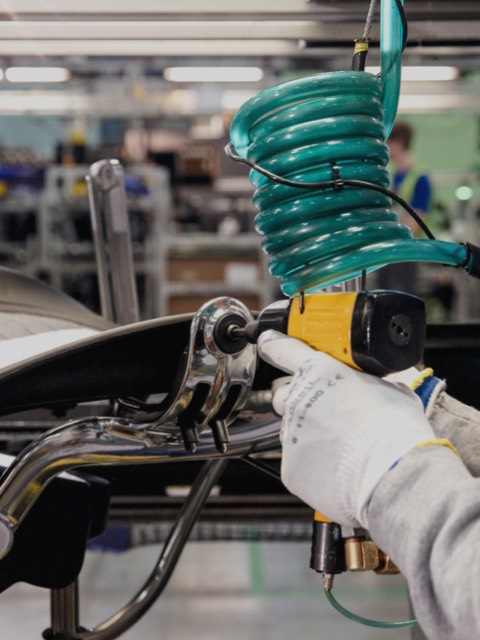We know our customers’ needs aren’t confined to the work environment; they're concerned with the reliability of every aspect of their relationship with Herman Miller. To address these concerns, we continually apply, and even pioneer, innovative practices and technologies. One of those is the Herman Miller Performance System, and this video tells us more about the surprising story behind it. By applying practices like it to our operations network, from the dealer through our manufacturing and on to our vendors, we ensure reliability for our customers.
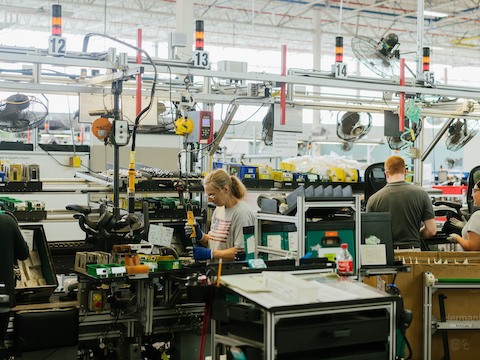
Production Systems
The office furniture industry has traditionally struggled with long lead times and unreliable delivery commitments, largely because the majority of industry products are built to each customer's unique order, and with so many products, each with their own potential feature and finish options, the number of product permutations runs in to the many, many millions. This, coupled with the complexity and inefficiencies of the industry's legacy manufacturing practices, has proved a barrier to improved reliability, customer service and profitability.
As part of our corporate strategy, several years ago Herman Miller began an aggressive drive to reinvent its operations. One important step was the establishment of a fruitful relationship with the Toyota Supplier Support Center, unique to our industry, that has enabled us to adopt and implement world-class, lean manufacturing processes. Since that time we have reduced our manufacturing footprint and inventories while dramatically growing sales and profitability. Average, standard product lead times have been cut from eight weeks to four, and many products are regularly available in ten working days.
In related but separate initiatives, we now have digital, real-time transactions between Herman Miller and its suppliers, and all plants are geared to produce orders for individual customers. Our ERP system coordinates sites, parts, people and equipment across all facilities. The results of our operational reinvention have been extraordinary, and the journey has only begun.
Employee Ownership
In 1950, Herman Miller instituted a formal programme of participatory management. As an important corollary, Herman Miller instituted an employee stock ownership programme in 1983. Today all Herman Miller employees with one month of service are entitled to own stock in the company. As of July 1999, about 16% of all outstanding shares in Herman Miller were held by employee-owners.
Employee-owners carefully monitor and know how their roles contribute to our profitability and daily reliability score – a score measuring our performance against customer expectations. Each month every employee reviews the numbers, particularly our EVA performance, a measure of our contributions to the long-term value of the company. We are owners, we think like owners and we share in the fortunes of the business, like owners. We also work hard to understand our opportunities for long-term profitability and growth.
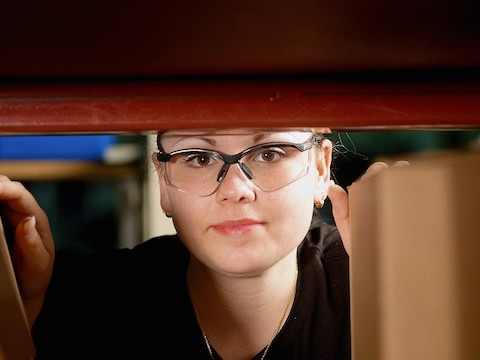
Economic Value Added
To help us to make all the short- and long-term decisions that affect our company and help it to grow, we use a highly respected performance indicator, measurement and compensation system called "Economic Value Added" (EVA), popularised by the management consultants of Stern, Stewart and Company.
EVA is an internal measurement of operating and financial performance that is linked to incentive compensation for all employee-owners. Under the terms of the EVA plan, we shifted our focus from budget performance to long-term continuous improvements and the creation of economic value.
When we make plans for improvements around here, we include an EVA analysis. When we make decisions to add or cut programmes, we look at the impact on EVA. Every month we study our performance in terms of EVA, and this measurement system is one of the first things that new recruits to the company learn. EVA has proved to be a strong corollary to shareholder value since its adoption.
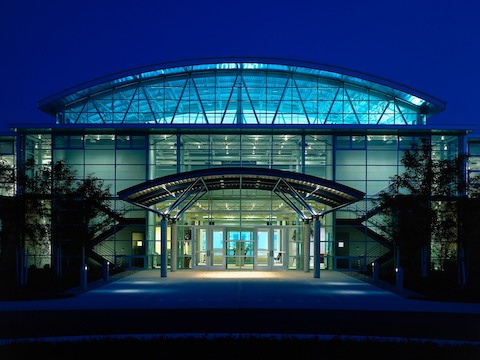
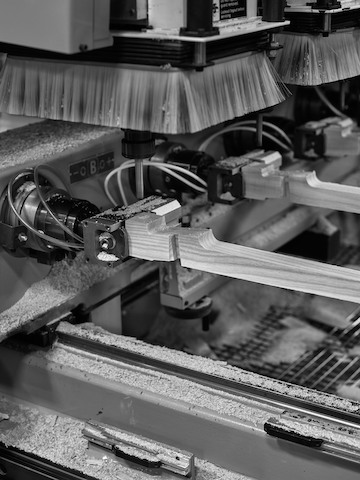
Innovation
Hard pressed to stay in business during the Depression of the 1930s, D.J. De Pree gambled on contemporary furniture designed by Gilbert Rohde. The merits of that gamble became so evident that by 1945 Herman Miller phased out its traditional furniture to concentrate on contemporary, soon to be known as "modern", furniture.
In 1960, inventor and researcher Robert Propst, as director of the newly formed Research Division in Ann Arbor, Michigan, began to explore the real work needs of the office worker and the organisations depending on them. He and his researchers, recognising office productivity as a major business concern for the future, focused on the integration of people, machines and changing work processes. The open-plan office system, called Action Office, resulted from that research and was brought to market in 1968.
Such innovation is a result, not a goal. Innovation results from thoughtful research into the complexities of our customers' needs, exploration into materials and processes, and designs responding to social and economic trends in the global market. Of course, a designer adds his or her inspiration to the mix. Charles and Ray Eames' moulded plywood chair, Bob Propst's Action Office, Bill Stumpf's Ergon and Aeron chairs and Ayse Birsel's Resolve system all resulted from this combination of forces.
Another aspect of innovation – risk-taking – is just as important. Herman Miller tries to maintain its appetite for risk. As we have grown larger and become responsible for more equity, the pressure to minimise risk has mounted. Nevertheless, getting behind promising new products – that sometimes become innovations – remains a risk we are happy to embrace.
ISO Certificates
Find information about Herman Miller’s commitment to quality, environment and safety management systems through our third-party ISO certifications.
ISO 9001 is a family of standards for quality management systems, maintained by ISO, the International Organization for Standardization, and is administered by accreditation and certification bodies. Certificates are awarded by country and type.
ISO 14001: Focusing on the benefits of an occupational health and safety management system, ISO 45001 is a workplace safety standard with process-orientated requirements and employee participation. ISO 45001 allows an organisation to develop a management system that addresses the specific risks of its workplace.
ISO 45001: Focusing on the benefits of an occupational health and safety management system, ISO 45001 is a workplace safety standard with process-orientated requirements and employee participation. ISO 45001 allows an organisation to develop a management system that addresses the specific risks of its workplace.
